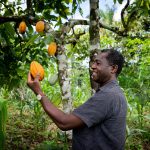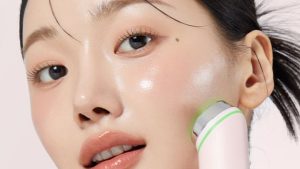
The UPF lawsuit that fizzled – and why the next one might not
Key takeaways:
First UPF lawsuit fizzles after judge rules no clear link to products.Science stacks up tying UPFs to obesity, diabetes and chronic disease.More cases likely as lawyers narrow claims and regulators circle.The first serious attempt to drag ultra-processed foods (UPFs) into court ended with an unceremonious thud. US District Judge Mia Perez in Philadelphia dismissed the case against PepsiCo, General Mills, Kellogg’s, Kraft Heinz, Mondelez and other household names, sparing Big Food the kind of courtroom fireworks that once reshaped the tobacco industry.
But this was only round one. With the science stacking up, Washington taking aim and bakery, snack and breakfast cereal brands sitting squarely in the firing line, the next lawsuit could land harder.
What makes this case so important isn’t its failure, but what it signals: plaintiffs are finally moving from the world of academia and public health into the courts. Researchers have been sounding the alarm on UPFs since 2009, when the NOVA classification system first coined the term. In the years since, studies have steadily linked these foods to obesity, diabetes and chronic disease – with the warnings only intensifying over the past decade. Regulators are now scrambling to catch up. And with lawyers circling, the industry could be staring down its biggest liability battle since trans fats.
It also matters because of who is in the dock. Not niche brands or fringe products, but the giants of the global food industry: the companies behind the Oreos, Pop-Tarts, snack cakes and cereals that fill pantries, lunchboxes and breakfast bowls every day. These aren’t occasional indulgences but the everyday staples of modern eating. And that makes the stakes far higher than a one-off courtroom defeat.
The teen who took on Oreos and Froot LoopsThe case was brought by 19-year-old Bryce Martinez, who was diagnosed with Type 2 diabetes and non-alcoholic fatty liver disease when he was 16. His lawyers argued that years of exposure to UPFs hardwired his cravings and sparked chronic illness.
The complaint named more than 100 branded products across the snack, bakery and cereal aisles, accusing food companies of designing them to trigger the brain’s reward circuits. Add decades of cartoon mascots, bright packaging and child-focused marketing, and the comparison to Big Tobacco became inevitable. The suit even noted that Philip Morris once owned Kraft and General Foods, while RJ Reynolds controlled Nabisco and Del Monte – a literal hand-me-down of the so called cigarette ‘addiction by design’ playbook.
But Judge Perez wasn’t convinced. Martinez, she said, hadn’t shown which specific foods he ate, in what amounts or how they directly caused his illnesses. “There are simply not enough facts to suggest that Defendants’ products caused Plaintiff’s harm,” she wrote. Listing over 100 brands without evidence of actual consumption was “unacceptable.”
That lack of specificity sank the case before it even reached discovery – the critical stage that could have pried open company documents on formulation and marketing practices. For the food industry, avoiding that process was a major relief.
The science Big Food can’t outrunCourtroom rules might’ve saved the companies this time, but the science is moving against them.
Research published in credible journals like The Lancet, Nature Medicine and JAMA over the past two years has repeatedly linked high UPF intake to obesity, Type 2 diabetes, cardiovascular disease, depression and higher all-cause mortality. One large European cohort study found that for every 10% increase in calories from UPFs, the risk of premature death rose by 3%.
The US Centers for Disease Control and Prevention (CDC) reports that nearly two-thirds of American children’s calories now come from UPFs, with breakfast cereals, packaged breads and sweet snacks among the biggest contributors. For children aged 6-11, the figure climbs even higher.
Ingredient audits add to the pressure. American versions of cereals like Froot Loops and Lucky Charms still use artificial colors and additives long banned in Europe, although Kellogg’s has pledged to phase them out by 2027. Psychologists, meanwhile, warn that ‘hyper-palatable’ formulations can dull satiety signals, making it harder for children to know when to stop eating – an effect that echoes the addictive potential at the heart of Martinez’s lawsuit.
Still, not everyone agrees that UPFs should be tarnished with the same brush. Food scientist Dr Kantha Shelke told this site that processing per se doesn’t make food unhealthy. “Most of the studies linking UPFs to negative health outcomes are observational. They don’t prove causation, but media and policy treat them as if they do.” She added: “Pasteurization, fermentation, fortification — these are technologies that have improved public health for generations. Treating all processing as suspect undermines consumer trust and food safety.”
Also read → UPFs: It’s time to focus on what food delivers, not how it’s madeShe also notes that fortified cereals and packaged breads have improved nutrition for low-income households by reducing deficiencies in iron, folate and B vitamins. Yet that nuance may be lost in the courtroom and the headlines.
For regulators, campaigners and lawyers, bakery, snack and cereal products remain the most visible symbols of UPFs and therefore the easiest targets. Many cereals still pack high doses of sugar; snack cakes blur the line between meal and dessert; even packaged breads and tortillas promoted as ‘whole grain’ often contain additives that push them into UPF territory. For millions of American families, these aren’t occasional indulgences but everyday staples. That makes them harder to defend and, if regulators sharpen the definition of UPFs, prime candidates for the first wave of formal restrictions.
The next lawsuits will be smarter and harder to dodgeIf Martinez’s lawsuit was a test case, the next wave is already forming. Law firms are recruiting families and exploring class actions targeting narrower complaints designed to avoid the mistakes that sank his case. By focusing on specific products, tighter health claims or child-focused marketing, future lawsuits will be harder to dismiss on technical grounds and more likely to advance to discovery.
Meanwhile, Washington is circling. The Department of Health and Human Services’ Make American Children Healthy Again explicitly flags UPFs as a driver of obesity and chronic illness. A Texas bill could require warning labels on products containing additives banned abroad. Former FDA Commissioner David Kessler has urged regulators to strip refined carbs from the ‘generally recognized as safe’ (GRAS) list. And FDA commissioner Martin Makary is under direction from Secretary Kennedy’s HHS and has promised to close the gap in defining UPFs
The parallels with tobacco are difficult to ignore. Food is obviously not cigarettes, but critics argue the comparison persists because of one thing they share: products designed to drive repeat purchase. That’s why the provocative question continues to surface in public health debates – is a Pop-Tart the new cigarette?
For now, Big Food has dodged a bullet in Philadelphia. But producers would be wise to treat it as a warning shot.
Case: Bryce Martinez v. Kraft Heinz Company, Inc. et al., filed Dec. 10, 2024 (subsequently removed to federal court, Eastern District of Pennsylvania). No. 241201154.











